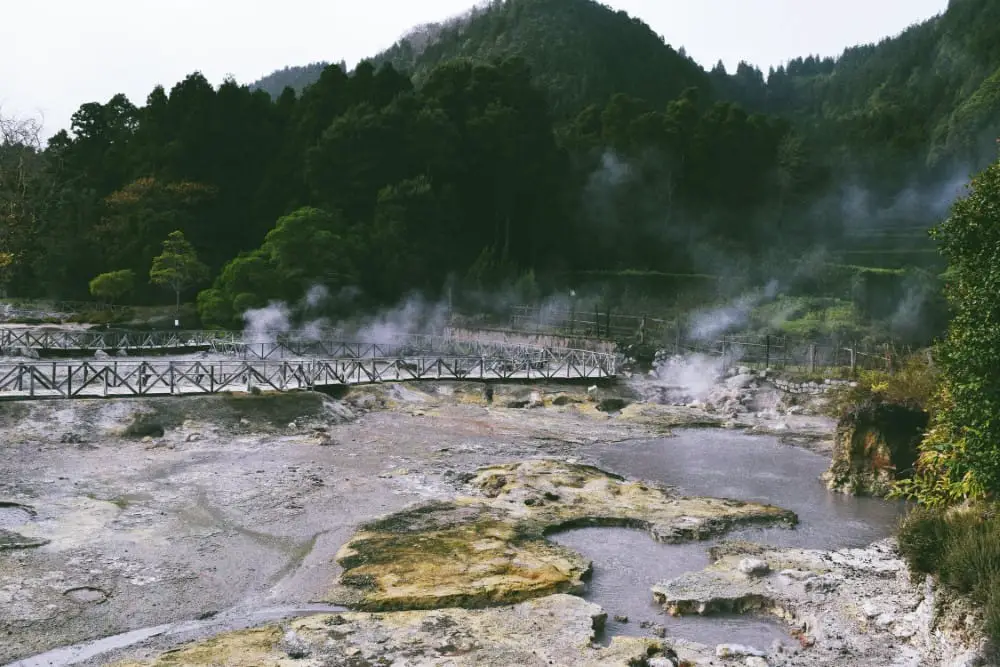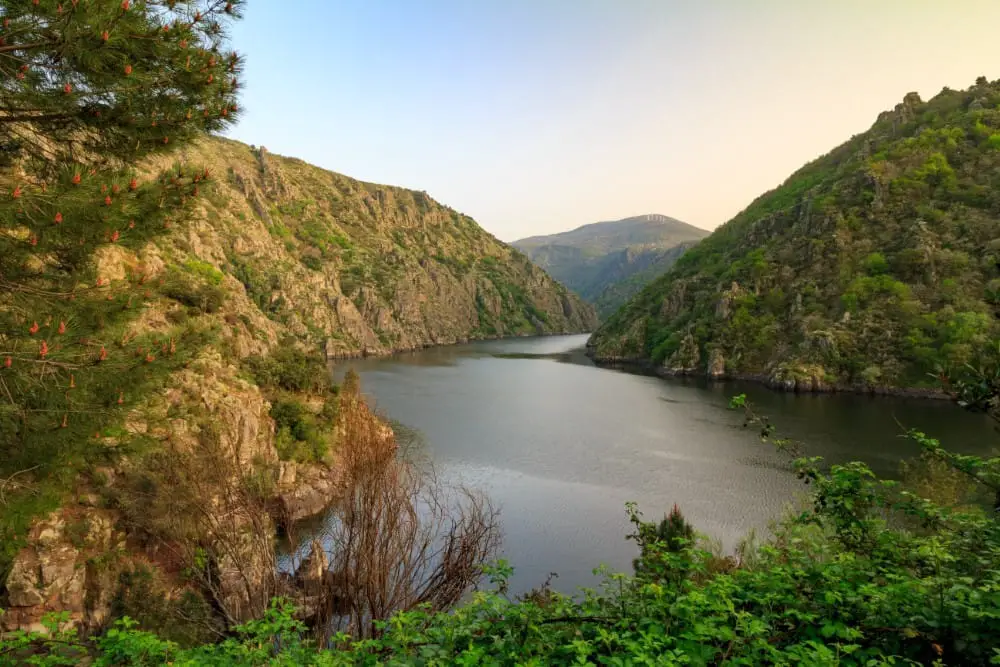
All over Europe the interest and attraction for the thermal waters is a fact that goes back many centuries. Surely several famous spa towns located in the old continent come to mind: health and wellness centers, in their origin and over the years, are already part of the European heritage.

Subscribe to our newsletter and
GET OUR FREE GUIDE "7 TIPS TO PREPARE YOUR RELAX GETAWAY!What is EHTTA and what are its objectives?
EHTTA stands for European Historic Thermal Towns Association; that is, European Historic Thermal Towns Association. Its objective can be guessed from the name itself: to protect, promote and improve the thermalism in Europe. The protagonists are those places - cities or regions - that have thermal waters and a patrimony developed around them.
Let's see which are these jewels that dot the European territory!

Are you looking for a spa to take care of your health?
CONSULT OUR SEARCH ENGINE TO FIND SPAs IN SPAIN!
Germany
Bad Ems
Located within the Nassau Nature Reserve, between Frankfurt and Cologne, the origins of Bad Ems date back to the s. VII. From its fifteen springs, water flows between 27ºC and 57ºC, with a high presence of sodium and bicarbonate, ideal for treating respiratory and gastrointestinal problems. Nearby is the largest archaeological monument in Germany: the remains of the fortified frontier of the Roman Empire, a World Heritage Site.
Locate it on the map: https://goo.gl/maps/d8kNUs5rCidVUaMy5
Bad Homburg
The Romans already knew about Bad Homburg's minerals. However, the area gained prestige among high society in 1809, when the first mineral-medicinal spring was discovered. Bad Homburg has eight springs from which water gushes at a maximum of 34.5ºC. Various mineral compositions make the waters ideal for treating different ailments. In the 19th century, the future King Edward VII of England visited Bad Homburg a total of 32 times and popularized the famous "Homburg cap".
- Locate it on the map: https://goo.gl/maps/yGm9w3yJgBLkPWPb7
Bad Kissingen
The kings of Bavaria began to take an interest in the springs of this spa in the early 19th century, becoming today the most famous spa in Germany. The waters that flow from its seven springs have very diverse applications, such as metabolic, cardiovascular or digestive system disorders, among many others. Among its famous guests are such powerful personalities as Otto von Bismarck and Empress Sisi.
- Locate it on the map: https://goo.gl/maps/mYuCT9vzMSLuV2M46
Baden Baden
The roots of Baden-Baden go back to Roman times, when it was known as Aquae. However, it would be at the end of the 18th century when it achieved great fame among the most exclusive society. Located between the Black Forest and the valley of the Rhine River, Baden-Baden has waters rich in sodium with temperatures between 56ºC and 68ºC. Approximately 800,000 liters of mineral-medicinal waters flow every day. Its fame attracted composers such as Johannes Brahms and Clara Schumann, who came here seeking inspiration.
- Locate it on the map: https://goo.gl/maps/85tKKWe2dTVS1bsd7
Wiesbaden
The name Wiesbaden can be translated as "meadow baths" and the origin of the town can be traced back to Roman times. Like other spa towns, its greatest development took place from the 18th century onwards. Known as the "Nice of the North", due to its mild climate, Wiesbaden is noted for its peculiar architecture and its 26 thermal springs, whose waters reach 66ºC. Russian writer Fyodor Dostoevsky discovered gambling fever during a visit to Wiesbaden and its renowned casino (his passion for roulette games would be the inspiration for his novel The Gambler).
- Locate it on the map: https://goo.gl/maps/5Qb7gPAQLWcDyuadA
.jpg?itok=09FVDlTE)
Austria
Baden bei Wien
The thermal tradition of the area has remained active since before the Roman Empire, with the place standing out during the 19th century, when it was known as "The Spa of the Emperors". Baden bei Wien is located just 25 kilometers from Vienna. The sulfur content makes the waters not very pleasant to drink, so immersion and mud baths are the most common uses. Among its many illustrious guests, Beethoven or Mozart, who came to compose famous pieces in the city itself: the Ninth Symphony of the first or the Ave Verum Corpus of the second.
- Locate it on the map: https://goo.gl/maps/C5njT8z4nJsFeMCx6
Belgium
Spa
The word spa has become synonymous - in English - with spa. What is not so well known is that this Belgian place is behind the use of the term. Spa has been a major thermal resort since the 16th century and its prestige has been maintained over the centuries. Known as the "Pearl of the Ardennes", Spa is also famous for its bottled waters, which were already being shipped all over Europe and Russia in the time of Tsar Peter the Great, a regular visitor to Spa.
Spa has been a major thermal resort since the 16th century and its prestige has been maintained over the centuries.
- Locate it on the map: https://goo.gl/maps/NxwefSD16hMe5TWbA
Croatia
Daruvar Spa
The iron-rich waters of Daruvar have been used for more than 2000 years by Celts, Romans, Ottomans, Austro-Hungarians... The town of Daruvar is located in northeastern Croatia. Two mineral springs and three thermal mud springs feed Daruvar, with temperatures between 39.2°C and 47.7°C. The calcium and hydrocarbonated waters of these springs are famous for treating infertility, as well as being ideal for the treatment of rheumatic diseases.
- Locate it on the map: https://g.page/DaruvarskeToplice?share
Spain
Caldes de Montbui (Catalonia)
Just 30 kilometers from Barcelona, Caldes de Montbui is the first spa town in Catalonia. In addition, it has the best-preserved Roman baths in the peninsula. Its waters gush at 74ºC, one of the highest temperatures in all of Europe and its presence has marked the history of this town of less than 20,000 inhabitants. The Font del Lleó (Lion Fountain) is the best known of Caldes de Montbui and retains many of its original elements, since 1581.
- Locate it on the map: https://goo.gl/maps/wdnA6mNqJcthCFcm6
Chaves-Verín
Under the denomination Eurocity of Chaves-Verín are encompassed several regions of two countries (Spain and Portugal), in a territory rich in mineral waters and a common history. Many of the most famous bottled waters in Spain and Portugal come from this area, which has one of the highest concentrations of mineral-medicinal waters in the Iberian Peninsula. This concentration derives from the existence of a tectonic plate (the Corga fracture), which crosses the territory. The thermal waters that flow here are between 18ºC and 73ºC, although they have similar chemical characteristics.
- Locate it on the map: https://goo.gl/maps/QwrK6HzbCmcpmsASA
Galicia
Galicia has a long thermal tradition, dating back to Roman times. Proof of this are various remains from the period, including those found in Lugo, Ourense or Caldas de Reis, among others. Although during the Middle Ages the use of thermal waters was reduced, the territory witnessed a new growth from the 18th century onwards. With its more than 300 catalogued mineral springs, Galicia is one of the most outstanding thermal destinations in Spain.
Mondariz Spa
The Mondariz area was inhabited even before the Roman presence. The major development of the town began at the end of the 19th century with the discovery of the Troncoso thermal spring. Here the water gushes through layers of granite, reaching the surface at an average temperature of 15ºC, with a strong presence of minerals. This spa, famous among high society, was very fashionable during the Belle Époque when it came to have its own magazines, called La Temporada and Mondariz.
Ourense and Province of Ourense
- See our publication on "The thermal waters of Ourense" for more information.
- Locate it on the map: https://goo.gl/maps/KNZQtdrJA5pRY38b8
Estonia
Pärnu
The origin of the Pärnu thermal complex dates back to 1838, when the first baths were founded. It was this town that was the first in Estonia where water with high-grade mineralization was found. This water is extracted at a depth of more than 600 meters due to its high mineral content. It is calcium-sodium chloride water and has a temperature of 13ºC.
France
Bagnoles de l'Orne
Bagnoles-de-l'Orne was raised at this point for its natural enclave, with a thermal spring with healing properties famous since medieval times. Its waters, whose temperature reaches over 24ºC, are especially indicated for the treatment of rheumatism, osteo-arthritis, circulatory and gynecological problems. The legend of Arthur and his knights was first recorded at Domfront, not far from Bagnoles de l'Orne, and it is said that the legendary lake is the one in this locality.
Châtel-Guyon
The gargouillox are named for the noise they make when gushing and have treated digestive ailments for the past 150 years. The thermal complex was developed from the end of the 17th century, following the discovery of its springs. Châtel-Guyon represents a classic example of a French mountain spa. At the beginning of the 20th century, as many as 28 thermal springs were discovered, which feed both the sources of the thermal park and the establishments of the Grandes Thermes. The novel Mont Oriol, by the writer Guy de Maupassant tells the story of the creation of the spa and perfectly captures the atmosphere of the time.
Clermont Auvergne
La Grande Source is discovered in 1844 and marks the birth of the spa, although it is known that the thermal springs in the area were already used since ancient times. Clermont Auvergne is located in the heart of the Tiretaine valley. The aristocracy and bourgeoisie from all over the world would come to this thermal establishment. In 1862 Napoleon III and the Empress Eugénie visited the spa, which was a turning point in his fame.
.jpg?itok=09FVDlTE)
Fédération Thermale et Climatique Française
The Fédération Thermale et Climatique Française wascreated in 1924 to study the problems and challenges facing the French thermal industry. The objective is to work for the development of the thermal culture in the French country.
La Bourboule
It is very likely that already the ancient local Celtic tribes knew about the hot spring, although the first bathing establishments would not be built until the 15th century. La Bourboule is located in the heart of the Auvergne, at an altitude of more than 800 meters. The atmosphere of the Belle Epoque is still reflected in the town, whose thermal center specializes in treatments for children, especially respiratory diseases.
Le Mont Dore
Mont Dore is located in the Puys mountains where numerous visitors arrive attracted by its ski slopes and its thermal waters, whose properties were already known to the Romans. Twelve thermal springs are known today. The gaseous waters of Mont-Dore have the highest concentration of silicon in all of France. Due to the climate, its thermal establishments are only open to the public between mid-June and mid-September. One of the main attractions of Mont-Dore is the Capucin Funicular, the oldest electric funicular railway in France.
Luchon
It was the Romans who first intervened in Luchon to enjoy its waters, starting an age-old tradition. High up in the Pyrenees, Luchon is famous for its spa, as well as being a winter sports center. It is famous for its Vaporarium, unique in Europe: a natural gallery inserted into the rock itself, more than 1 kilometer long, where the vapors of the springs themselves seep through the walls, creating a humid environment between 38ºC and 42ºC.
Royat-Chamalières
Already in Gallo-Roman times, this thermal spring was highly appreciated, as remains of the period attest. On the heights, among the mountains of the Massif Central, is the baroque spa of Royat-Chamelières. It is famous for being one of the most important European centers for the treatment of vascular diseases and rheumatology. The composition of the waters is peculiar, as they are 99.4% carbonated and flow at temperatures of up to 37ºC. The visits of Napoleon III and the arrival of the railroad boosted its popularity in the 19th century.
Vichy
The Romans settled Aquis Calidis - today Vichy - near the Allier river and around the thermal spring, already known to the Gauls before. The qualities and richness of the water that flows in Vichy have made this locality famous all over the world and recognized for its cosmetics, laboratories, pills and bottled water, which is exported to many countries. The waters, which flow from six different springs, are very rich in minerals.
Georgia
.
Imereti Region
Imereti is a region locatedin western Georgia, part of the ancient Silk Road. The most prominent spas are Tsalkubo -the largest thermal bath in operation today- and Sairme, while its most important urban center is Kutaisi. For its part, Sairme, located in a mountainous, subtropical area, has been known since the late 19th century. Jason and the Argonauts arrived in this region in search of the Golden Fleece.
.jpg?itok=09FVDlTE)
Greece
Hellenic Association of Municipalities with Thermal Springs
In addition to many other things, the Greeks were also pioneers in hydrotherapy, in a country very rich in thermal resources. The Hellenic Association of Municipalities with Thermal Springs was born in 1983, with the objective of protecting and developing the thermal and mineral-medicinal resources of the Hellenic country, as well as promoting the Greek thermal culture. It is formed by 55 members and is based in Thessaloniki.
Crinides-Kavala
Today, Crinides is a port town famous for its therapeutic muds. The area was already well known among the Macedonian kings, for its fertile soils and thermal waters. Of particular note in the area is the archaeological site of Philippi, a World Heritage Site and one of the most important in Macedonia. The warm waters of Crinides are hypothermal, hypotonic and rich in calcium, magnesium and bicarbonates. In addition, the healing muds are also naturally temperate (27°C). Crinides-Kavala is known to be the home of the first Christian church in Europe.
Crinides-Kavala is known to be the home of the first Christian church in Europe.
Loutra Pozar
Although hydrotherapy has been practiced in this area of Almopia for centuries, its development in Loutra did not explode until the first decades of the 20th century. Loutra Pozar, the birthplace of Alexander the Great, is located in northern Greece, 13 kilometers from the capital. Its rich mineral waters spring from the banks of the Thermopatos River (whose name means hot river, in Greek), reaching temperatures of 37ºC. They are applied in treatments by ingestion and bathing, with benefits for rheumatic, respiratory, muscular and nervous problems, among others.
Loutraki
The thermal waters of Loutraki were already used by Spartan soldiers, who sought to strengthen themselves thanks to their benefits. In fact, Loutraki is considered by many as the birthplace of Greek thermalism. They are waters rich in magnesium, consumed especially by ingestion. They are indicated to reduce blood pressure and are beneficial for the kidneys and bladder, among other benefits.
.jpg?itok=09FVDlTE)
Do you know the Spanish spas?
Do you know the Spanish spas?
Spanish spas?
CONSULT OUR SEARCH ENGINE TO SEE THE SPAS WE HAVE IN SPAIN!
Hungary
Budapest Spas
The famous baths of this cosmopolitan city bring together Western and Eastern traditions. Already from Roman times, Budapest was famous for its public and private baths, even rivaling Rome. The abundant thermal waters of Budapest flow from 123 hot springs, reaching 70 million liters per day. Their temperatures range from 21ºC to 78ºC and present very different benefits and properties. The most famous baths are the Gellért, Szècheny, Rudas and Király (both Turkish) and the Palatinus.
For more information, we recommend this article from the blog El Viaje de mi Vida.
Italy
Acqui Terme
The ruins of the Acqui Terme aqueduct are witness to the importance of water in the area as early as Roman times. Acqui Terme is located in the heart of the Italian Piedmont region, surrounded by vineyards. Water flows from the Bollente spring, the main spring of the site, with a flow rate of 560 liters per minute. The thermal baths have two other springs: Lago della Sorgenti - which forms a lake with therapeutic mud - and Acqui Marcia, rich in sulfur. The highest temperature reached by the waters of Acqui Terme is 74.5ºC.
Castrocaro Terme e Terra del Sole
The town has very ancient roots, going back to prehistoric times. The waters of Castrocaro have a distinctive green color, due to the presence of chrlorella algae, and are also salty. For their part, the muds made with "blue clay" are also famous. Two types of water flow in Castrocaro: the salsobromoyodicas and sulfurous. The former are enjoyed in baths, while the latter are more suitable for inhalation treatments.
Fiuggi
Located a few kilometers from Rome, Fiuggi is one of the oldest thermal centers in Europe. The waters of Fiuggi are particularly indicated for kidney and gout treatments. There are two main springs in the area: the Boniface VIII and the Anticolana.
Fiuggi is one of the oldest thermal centers in Europe.
Montecatini Terme
It is believed that the Romans already knew about the saline waters of Montecatini. However, it would be in the 15th century when the studies of the physician Ugolino Simoni, founder of Italian hydrology, shed more light on its benefits. Four are the sources that feed the thermal baths, each with its own characteristics. The famous composer Puccini composed part of his opera La Bohème in these thermal baths.
Montegrotto Terme
Montegrotto is not far from Venice and has been famous for its thermal and parafango treatments since Roman times. The waters spring from Montegrotto in the Lessini Mountains, reaching even 86°C, coming from depths between 2000 and 3000 meters. The waters are of two types: sodium-chloride and saline-bromide-iodine waters; used both in baths and in its famous parafangos.
Salsomaggiore Terme
The existence of the saline waters of Salsomaggiore is at the very cause of the origin of the settlement. These waters were known since pre-Roman times, but it was not until 1839 that their properties were studied by Dr. Lorenzo Berzieri. The town of Salsomaggiore is very close to the Via Francigena, an ancient pilgrimage route leading from Canterbury to Rome. The saline waters of Salsomaggiore have five times the density of the Mediterranean Sea.
Luxembourg
Mondorf-les-Bains
Mondorf-les-Bains is developed around the thermal activity, after the discovery of its saline waters in 1841, by Karl-Gotthelf Kind -who, in fact, was looking for salt in the depths-. This city of little more than 5000 inhabitants is the only thermal point of Luxembourg. The thermal establishment, integrated in a park of 42 hectares, was designed in the 19th century by the famous architect Edouard André.
Poland
Lądek-Zdrój
The date of foundation of this thermal village goes back to 1241, but its thermal springs seem to have been used earlier. Lądek-Zdrój is located in the southwest of Poland, near the border with the Czech Republic. The healing and regenerative properties of the waters of Lądek-Zdrój are particularly extensive. It is here that the "Piolets d'Or", the ceremony for the awarding of the world climbing Oscars, is held.

Portugal
Caldas da Rainha
This Portuguese municipality is home to one of the first thermal medical centers in Europe, founded in 1508. An hour's drive from Lisbon, Caldas da Rainha is a place that has much to offer in addition to its waters. From the springs that feed these hot springs gush waters around 35ºC, especially indicated for respiratory treatments. Due to the fertility of its lands, this area is known as the "garden" of Portugal. In addition to its waters and its lands, the glazed pottery typical of the place is famous.
São Pedro do Sul
The thermal, alkaline and sulfurous waters have been a magnet attraction for visitors to São Pedro do Sul for more than 2000 years. This locality is located a few kilometers from the city of Viseu, surrounded by valleys and mountains. The great tectonic fault that develops between Verín - Régua - Penacova favors the abundance of mineral-medicinal waters. The waters reach temperatures of more than 65C in the area.
United Kingdom
Bath
For more than 2000 years, Bath has been a spiritual and healing landmark. Already the ancient Bretons worshiped the springs, which are said to have beendiscovered around 863 BC by Bladud, a prince exiled from his lands and seeking a cure for his leprosy. The waters of Bath are generated at great depth and gush at more than 45ºC. Its Roman Baths are a World Heritage Site and the waters that flow here are the hottest in the UK.
Czech Republic
Karlovy Vary Region
The spa towns of this region were among the most prestigious in 19th-century Europe and were visited by great illustrious people, including kings and nobles. The Karlovy Vary region is located in the westernmost corner of the Czech Republic and contains five historically renowned spa towns: Mariánské Lázně, Františkovy Lázně, Jáchymov and Kynžvart. As a curiosity, note that the Jáchymov spa was established by Marie and Pierre Curie and is unique for its radon-based treatments.
Turkey
Afyon
Afyon is undoubtedly the capital of thermal tourism in Turkey. In this area many civilizations have settled and left their heritage: Hitites, Phrygians, Romans, Byzantines or Ottomans, among others. There are four outstanding thermal areas in the area: Ömer-Gecek, Heybeli, Hüdaiand Gazlıgöl. In all of them the waters reach high temperatures, even exceeding 80ºC, particularly in the Hüdai spring.
Bursa
Numerous Turkish hammans and baths are present in Bursa, a town built around mosques, fortresses and springs. Bursa is the fourth largest city in Turkey and its crystal-clear waters are commonly known as "Silver Waters". Waters above 40°C - known as female waters - are used for bathing, while those with temperatures below 40°C - or male - are taken by ingestion. Thermal waters gush at temperatures up to 80ºC. Ebetween 1326 and 1453, Bursa was one of the most important centers of silk and spice trade in the world.

Subscribe to our newsletter and
GET OUR FREE GUIDE "7 TIPS TO PREPARE YOUR RELAX GETAWAY






